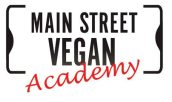Congratulations! Imagine you’re booked to give a presentation at your local VegFest, community event, library, or corporate workshop. You’re excited to share the benefits of veganism, from improved health and wellness to reduction in environmental destruction and non-harming of animals.
If this is your first time giving this presentation, you’re probably feeling a bit overwhelmed and nervous, wondering where to start and how to convey the information (without being preachy). If you’ve given similar presentations before, perhaps you didn’t get the results you had hoped, such as new clients or follow-ups.
The key to creating a compelling presentation that engages the audience is to understand where these people are in their vegan journey and to make them the hero in your presentation.
Superhero Costumes?
What do I mean by hero? Are you supposed to envision the audience dressed up in superhero costumes, as opposed to the oft-cited advice of visualizing them naked (which is just weird)?
Well, not quite.
The Hero’s Journey
If you’ve watched Star Wars or The Matrix or Hunger Games or Harry Potter, you’ve encountered Joseph Campbell’s concept of the Hero’s Journey.
Through his research, Campbell discovered that all cultures on the planet, across time and space, have very similar stories and myths. They are how we as humans understand our world, relate to each other, and encode our values into our societies.
In the hero’s journey, the main character (the hero) faces internal and external problems, is confronted with an inciting incident that moves the hero from comfort to discomfort, with no turning back, in order to achieve a final transformation. Along the way, the hero encounters a mentor or guide who provides insights, information, and support.
Here’s the critical part: Your audience is the hero. You are the guide.

In a lot of presentations, these two get mixed up. The presenter thinks they’re the hero, poised to save the day, like Superman rescuing Lois Lane.
However, if you want to truly engage your audience, you have to serve as the mentor who shows them what’s possible and what’s on the other side of their struggle, problem, or desire.
As you craft your presentation, use this idea of the hero’s journey to describe your story arc:
- The world as it currently is for the people in the audience
- The world as it could be
- The obstacles that stand in the way
- How you as the guide can help get them past these obstacles
Here’s an example. Let’s imagine VLCE Holly, who helps her clients transition to veganism.
Here’s VLCE Holly’s story arc for her audience:
- The world as it is = Unhappy with their weight or how they are feeling physically; had a health scare; saw some footage of factory farms or watched a documentary, but feeling daunted and overwhelmed by having to change their lifestyle and how it will affect them, their family and their friends.
- The world as it could be = Becoming healthier, feeling connected to the earth and those around them, seeing bigger opportunities for their life, changing careers, starting a business, finding love, feeling more confident, having a positive impact on the planet.
- Obstacles = Lack of information about what foods to eat, lack of cooking skills, lack of time to cook, lack of support from partner or family, not sure where to start, not wanting to be seen as different or problematic in social situations.
- How Holly can help = Talk about the importance of mindset, daily habits, and finding a supportive community; provide grocery shopping lists, easy meal ideas, and tips for eating out.
Holly is providing her audience with the information, tools, and guidance they need to transform their lives. She understands where they are in their journey and knows that she has to empower them to take action for themselves.
Internal, not just external, transformation
Most of us tend to focus our presentations and materials on the last part of the story arc: providing tips and recipes. But, you first need to get the audience to envision how the world could be for them vs. how it currently is.
And not just the world in the macro sense. Yes, we definitely need to talk about climate change and animal suffering and health.
However, we also need to address the personal (internal) transformation people undergo when learning about and then becoming vegan. Talk about both the challenges and the benefits and share your own transformation, knowing that you are there as the guide in their hero’s journey.
And you know what? You are my hero for doing the important work you do to raise awareness of veganism and help people on their path to getting there.
 Based on her 10+ years of business, marketing, and teaching experience, Carol Cox, MA, VLCE created Speaking Your Brand to help entrepreneurs and professionals create their signature talk to build their business, brand, and network. To learn more about how to create and deliver compelling presentations, get Carol’s free mini-course at www.speakingyourbrand.com/free-course/. Say hi to Carol on Twitter and Facebook.
Based on her 10+ years of business, marketing, and teaching experience, Carol Cox, MA, VLCE created Speaking Your Brand to help entrepreneurs and professionals create their signature talk to build their business, brand, and network. To learn more about how to create and deliver compelling presentations, get Carol’s free mini-course at www.speakingyourbrand.com/free-course/. Say hi to Carol on Twitter and Facebook.

